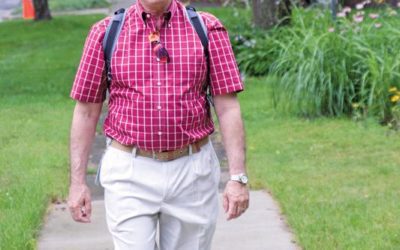When the Neutral Zone amicably ended its partnership with the University Musical Society on an annual showcase concert in 2012, its teenaged clients agreed with the decision. They were also determined to keep the spirit of “Breakin’ Curfew” alive.
After nine years, says Neutral Zone community relations director Mary Moffett, both the teen center and UMS felt the Power Center concert had “run its course.” Isaac Scobey-Thal, now a seventeen-year-old senior at Community High School, understood. Though he grew up on the event, he thought the setting was too “formal,” and individual performers’ time on stage too limited.
Scobey-Thal and his friends were determined to take the idea to the next level. “I wouldn’t say there were any hard feelings towards UMS or any resentment in that sense,” he says. “But the teens wanted to show UMS and show themselves and show the Neutral Zone that they could start a music festival and do something really, really big even without that partnership.”
Scobey-Thal was a founding organizer and is now one of the lead facilitators, with Eva Rosenfeld and Ali Shahin, for Live On Washington. The annual street music festival, which marks its third year on May 30, expands on Breakin’ Curfew in every way. Although the lineup still features about twenty mostly teenaged performers (a few younger college students slip in), the day-long Live On Washington affords each act time to stretch out into a longer set. And where Breakin’ Curfew’s attendance was limited to Power Center’s capacity of 1,300, Live On Washington is a wide-open street festival. Organizers estimated last year’s crowd at 2,000 to 3,000, with attendance peaking for a set by Ann Arbor-born soul crooner Mayer Hawthorne.
The atmosphere is low-key as attendees of all ages stroll between two music stages and sidewalk visual art displays (and some sales) by NZ teens. For those enjoying the city’s first big outdoor event of the summer, it’s surprisingly easy to forget that most of the folks playing and running the show have yet to graduate from high school.
—
Live On Washington’s success is a perfect example of how the Neutral Zone has grown since it opened in 1998. Launched by local teens and their families in 1998 with support from the Ann Arbor Area Community Foundation, the center started out on S. Main as a dance venue and after-school hangout. A variety of classes, clubs and other activities sprang up, and by 2006 the center had grown enough to make the move to a considerably more spacious former building on E. Washington.
From the beginning, teens have taken ownership of the center’s programming. Staff advisors provide guidance and support, but teen “facilitators” like Scobey-Thal organize all of the center’s special events and most of its twenty weekly programs. Teens also hold thirteen of the center’s twenty-nine board seats.
“Young people should be able to have ideas and be able to work toward achieving and realizing those ideas when they’re in high school still,” says Neutral Zone executive director Lori Roddy. “So often as a young person I was told, ‘Oh, when you graduate from college you can do really cool things in your community.’ We tell kids in high school that if you have an idea, well, let’s strategize and see how we can make that happen. It might not be exactly what you want, but we can get pretty close to it.”
Skyline High senior Ali Shahin is a Neutral Zone board member, a member of the Live On Washington team, and the group facilitator for the B-Side, the center’s indoor music venue. Shahin says he started attending weekend concerts at the B-Side two years ago and quickly got involved behind the scenes.
“I’m thinking, ‘I’m sixteen years old and I’m in charge of making sure there’s music happening at this big concert space,'” Shahin recalls. “The B-Side has the same capacity as the Blind Pig. They’re the biggest general-admission venues in downtown Ann Arbor. So I felt a big sense of responsibility, and also a big sense of pride, that I’m a young person who gets to be the custodian of this space.”
Many Neutral Zone programs advocate for social change. Riot Youth, the center’s group for LGBTQ teens, made headlines in the early 2010s when its Gayrilla Theater Troupe presented anti-bullying programs in numerous venues statewide, including the state capitol. In 2013, the center’s Red Beard Publishing imprint put out Uncommon Core, presenting local teens’ poetry alongside that of nationally established poets. The book includes a teaching guide, and the Neutral Zone is now partnering with the U-M’s Helen Zell Writers’ Program to train teachers in six area high schools to use Uncommon Core in their classes.
“It was really exciting to see a direct problem-the fact that there is no contemporary poetry in school-and then immediately come up with a solution that took a lot of work, but we did it and it worked,” says Clara Kaul, a Community High School junior and editor at Red Beard. “We had a problem and we directly answered it, and that was very empowering.”
The center’s next big step is to spread its approach into other teen centers, schools, and related institutions. “It’s really about giving young people an authentic voice, whether it be in a program setting like this or, dare I say, in high schools or middle schools as well,” says John Weiss, the Neutral Zone’s director of strategic initiatives. Since 2012 the Michigan Department of Education has funded the Neutral Zone to provide support at failing high schools statewide, engaging students in school reform efforts and training staff on how to get youth involved.
For a fee, the center also offers training for organizations that want to develop youth-driven programs. Most clients are in Michigan, but some are in states as far-flung as Georgia and California. Roddy says putting teens in charge is a counterintuitive move for most organizations. “It’s not really how people are trained to work with young people,” she says. “It’s really shifting a paradigm about how young people engage with programming.”
The results are hard to argue with as one wanders through an average afternoon of activity at the Neutral Zone. True to their own philosophy, adult staffers step back and let teens speak for themselves. Well-spoken, incisive and mature, the center’s teens rise to the respect and responsibility afforded them. Given the projects already under their belts in high school, it’s fascinating to consider what they might do in the next phase of their lives. “It became very evident to me that my voice matters here,” Shahin says. “There aren’t a whole lot of spaces, not just in our community but anywhere, where youth voice matters as much as it does here.”



